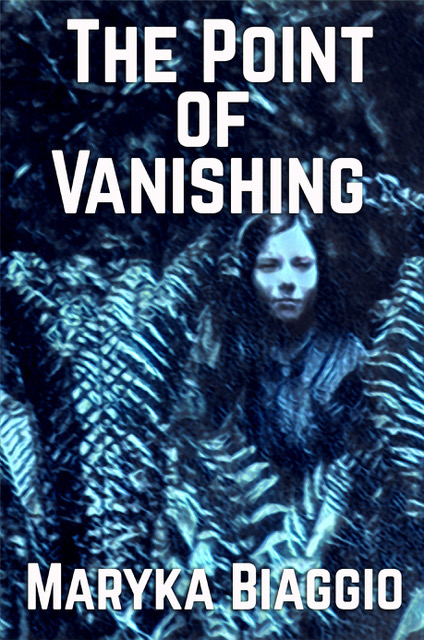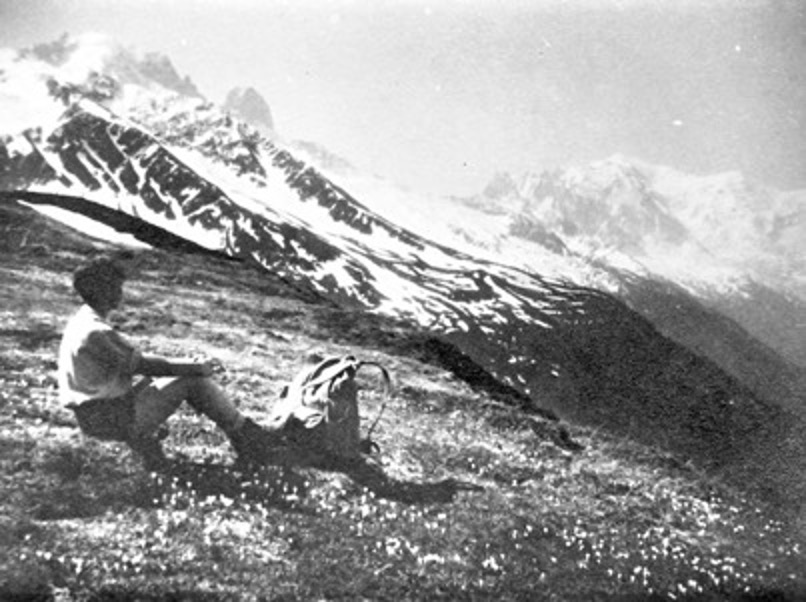
Buy the Book:
Bookshop (10% of sales go to indie bookstores)
Sunbury Press
Barnes & Noble
Amazon
Available in paperback and Kindle.
The Point of Vanishing
Delve into the captivating mystery of author Barbara Follett's dazzling rise, wrenching fall, and enigmatic disappearance.
The Point of Vanishing is based on the true story of child prodigy writer Barbara Follett, who had all the makings of promise and success. At age twelve she publishes her first novel to broad acclaim. But when tragedy strikes the family, Barbara flounders. On a December night in 1939 Barbara fights with her husband and storms out of their Boston home, never to be heard from again. The novel provides a captivating account of Barbara's enigmatic life—and disappearance.
Watch the book trailer:
See photos about Barbara Follett and The Point of Vanishing on my Pinterest Page.
See Goodreads reviews of The Point of Vanishing here.
Praise for The Point of Vanishing
“The Point of Vanishing is gripping. Biaggio breathes so much life into this haunting true story. Her characters will stay with you."
—Laura Smith, Author of The Art of Vanishing: A Memoir of Wanderlust
"This novel is exceptional in the skillful writing and the vivid portrayal of Barbara's fascinating existence as a child prodigy.... This is a touching and poignant story."
—Janice Ottersberg, Historical Novels Review, August 2021
“Blending known facts with intriguing conjecture, The Point of Vanishing tells the raw, gripping story of a young woman’s struggle to carve out a life for herself at a time when women had little power to do so. From the story of one woman’s hope to her startling end, Biaggio’s tale sparkles with life, freedom, and what it means to dream.”
—Tonya Mitchell, author of A Feigned Madness
“At the age of twelve, Barbara Follet was a bestselling author. At the age of twenty-five, she disappeared. A superb telling of her little-known life, The Point of Vanishing captures the essential struggle of a woman intent on freedom and trapped by family and responsibility. Rich in detail and piercing in its portrayals, the novel captures the yearning to be one’s own self, to travel the world, to think broadly, to live. And it asks: Is the sacrifice of that self worth the price?”
—Kim Taylor Blakemore, Amazon bestselling author of After Alice Fell
Discovering Barbara

When I stumbled on the story of child prodigy writer Barbara Follett in 2011, I knew I had to write a novel about her—and to somehow make sense of her enigmatic life. But I didn’t know that would lead to years of research and writing.
Barbara Follett, born in Hanover, New Hampshire, in 1914, had all the makings of fame and success. Her mother gave up a teaching career to school her at home—because both parents agreed no ordinary school could serve her dazzling intellect. Her father, Wilson Follett, author of the classic Modern American Usage, encouraged her nascent writing skills. By age four she knew how to type, and when she was twelve, she published a fantasy/adventure novel, The House Without Windows, to great acclaim. In 1928, she followed up with publication of a charming account of her journey on a square-rigger, The Voyage of the Norman D.
Then tragedy struck the family, and Barbara’s life changed irrevocably. Yes, she had more adventures—journeying halfway around the world with her mother and trekking Europe with her husband-to-be—sometimes courting danger. But some soul-squelching wound haunted her, and never again did she find publishing success. Then, in 1939, at the age of twenty-five, Barbara Follett walked out on her husband. To this day, Barbara’s disappearance remains a mystery.
Months after her disappearance, a police report was filed, but the police uncovered no clues as to her whereabouts. Her mother undertook an investigation of her own, tracking down anybody and everybody who’d had contact with Barbara before her disappearance, but to no avail. Before long, the trail went cold.
I set out to explore Barbara Follett’s life and writings in an attempt to understand what happened that fateful night in 1939. And there was plenty of material to read and evaluate. In 1960 Barbara’s mother, Helen Follett, approached Harold Grier McCurdy, an expert on childhood genius, offering to turn over letters, prose, and poetry by Barbara. McCurdy agreed to study Barbara’s history and books, which led to a five-year collaboration and publication of Barbara: The Unconscious Autobiography of a Child Genius in 1966. It is a fascinating read since it offers a psychological analysis of Barbara’s stories, starting with short stories written when she was quite young, and culminating in her unpublished novel Lost Island. It offers, in McCurdy’s words, “the unfolding of a quite individual drama.” Still, it shies away from asking the hard questions, perhaps out of deference to a mother’s pain over her lost daughter.

That left me to do my own research, and I found a treasure trove of material. Before her death in 1970, Helen Follett donated all of Barbara’s records to Columbia University. Housed in their library archives are boxes of letters, drawings, newspaper clippings, photographs, and unpublished stories and poems. It took me two visits and many hours to catalog, scan, and review the collection. Digesting it all took many more months, and fashioning Barbara’s story into a novel turned into a seven-year effort. While Barbara was at once fragile and daring, brilliant and awkward, she lived a life full of soaring twists and tragic turns. So any novel about her had to reflect not only the high drama of her life, but the agony of her sorrows, too.
Do I solve the mystery of Barbara’s disappearance? I cannot claim to know for certain what happened to Barbara in 1939. But, yes, I do offer my own conclusion, based on some recent fascinating revelations. Still, it is for the reader to decide, after undertaking this novelistic glimpse into Barbara’s fascinating life story, if it is true to the Barbara the pages of the novel reveal.
More About Barbara
Many people have been fascinated by Barbara Follett. Her story resurfaces every few years—on websites, in magazines, even in plays and musicals.
In 2019 Illustrator Jackie Morris published an illustrated version of Barbara's adventure/fantasy novel, The House Without Windows. The book is beautifully rendered and was shortlisted for the Waterstones Book of the Year Award.

Here are some other places to learn more about Barbara:
Astral Aviary. “The Barbara Newhall Follett Archive.” http://www.dreamshore.net/bluejay/barbara.html.
Collins, Paul. “Vanishing Act,” Lapham’s Quarterly, Winter, 2011.
Cooke, Stefan. “About Barbara Follett.” Farksolia: Barbara Newhall Follett’s Home on the Web. http://www.farksolia.org/about-barbara-follett/.
McCurdy, Harold G., in collaboration with Helen Follett. Barbara: The Unconscious Autobiography of a Child Genius. Chapel Hill: The University of North Carolina Press, 1966.
These are Barbara's two published books:
Follett, Barbara. The House Without Windows. New York: Alfred A. Knopf, 1927.
Follett, Barbara. The Voyage of the Norman D. New York: Alfred A. Knopf, 1928.